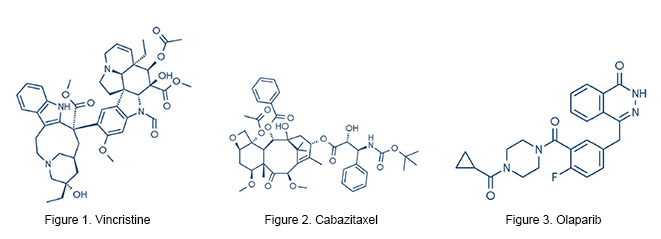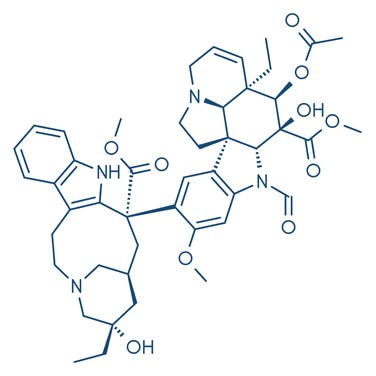Drug Repurposing: How High-Quality Bioactive Molecules Help Accelerate the Search for New Treatments
Despite advances in technology and our understanding of biology, bringing a new drug to market is now taking longer and becoming increasingly expensive. Among the most widely reported recent estimates, the Tufts Center for the Study of Drug Development put the cost of bringing a single drug to market at around 2.6 billion U.S. dollars in 2014. This represents a 145 percent increase compared to a decade earlier.
Climbing drug development costs aren’t just about pharmaceutical bottom lines, however. They’re a major concern for human health, limiting the ability of drug developers to reinvest and address unmet patient needs. What’s more, additional challenges such as the rise of generics and stricter drug price controls further threaten the ability of pharmaceutical companies to recoup the cost of R&D, putting the sustainability of the drug development pipeline at risk. Facing these growing challenges, pharmaceutical companies are searching for faster and more affordable ways of addressing unmet patient needs.
One potential solution gaining traction within the industry is drug repurposing: harnessing existing medicines for new therapeutic applications. With this strategy increasingly used to find promising new treatments in several key fields, we consider how repurposing bioactive molecules could help accelerate drug development.
From Unexpected Bonus to Cost-Effective Strategy
Drug repurposing isn’t an entirely new concept. In fact, a significant number of medicines already on the market or currently undergoing clinical trials have been repositioned for alternative applications. Perhaps the most well-known example of drug repurposing is that of sildenafil. Originally designed to treat hypertension and angina, the drug’s unintended side effects in clinical trials were quickly noted, ultimately resulting in its repositioning as a treatment for erectile dysfunction.
Today, drug repurposing isn’t just seen as an unexpected outcome — it’s a strategy that’s being systematically pursued to deliver more value from squeezed R&D budgets. As a good deal of information is already known about the physicochemical characteristics and safety profile of existing drug molecules, repurposing can simplify much of the early development process, saving pharmaceutical companies valuable time and resources and giving them much greater confidence that a drug candidate will deliver a favorable return on investment.

The Value of Bioactive Molecules
Although drug repurposing can offer a shortcut through the development stage, promising structures still need to be discovered. In order to identify viable structures quickly, bioactive molecules, including a diverse range of existing drugs and commonly used scaffolds, must be tested. Crucially, these structures need to offer good ADME (absorption, distribution, metabolism, and excretion) properties and low toxicities to support subsequent development efforts.
Heterocyclic compounds are cyclic compounds that have carbon and at least one other element as part of their ring structure. Their general structure resembles cyclic organic compounds that contain rings of only carbon. Three examples of drugs that contain heterocycles are vincristine (Figure 1), cabazitaxel (Figure 2), and olaparib (Figure 3), all of which are used to treat different types of cancer.
The presence of heteroatoms such as nitrogen, oxygen, or sulfur gives heterocyclic compounds distinct physical and chemical properties. Heterocyclic structures are extremely important structural features in bioactive compounds and are highly valued in drug design. Around two thirds of the top 100 drugs incorporate heterocycles in their structure, making them a reliable focus point for drug repurposing efforts. Using bioactive molecules with these structures can therefore be a very effective and efficient way of finding new or existing drug molecules for new disease treatments quickly and within a limited budget.
Application Example: Using Heterocyclic Bioactives
A focus on bioactive molecules incorporating heterocyclic structural features has delivered promising results in several therapeutic fields, including neurodegenerative disorders.
Age-related neurodegenerative disorders such as dementia have long been an important research focus for the pharmaceutical industry. However, despite spending decades of research and considerable resources toward developing innovative treatments, the therapeutic impact has been limited. This slow pace of progress is made more disappointing by the fact that some drugs that have shown great promise in the lab have been challenging to translate into a clinical setting.
Many neurodegenerative diseases, including Alzheimer’s, Parkinson’s, and prion-related disorders, are characterized by the buildup of misfolded proteins in the brain, which are thought to halt the production of proteins that are essential for healthy brain function. In a major breakthrough reported in 2013, a team from the UK’s Medical Research Council1 used an experimental drug to halt signs of neurodegeneration in mouse models of prion disease by restarting protein synthesis. However, despite these promising early findings, the compound was later found to be toxic to the pancreas and could not be progressed to clinical trials.
Looking to find other compounds that showed similar neuroprotective effects, the team subsequently tested over 1,000 molecules in the National Institute for Neurological Disorders and Stroke screening collection — around three-quarters of which were FDA-approved drugs. One of the compounds identified, trazodone, was a heterocyclic drug already approved by the FDA to treat depression. The compound was found to prevent brain cell damage in mice with prion disease and even restored memory in mice possessing a form of dementia, making it a promising compound to study further.
Although a recent UK study of electronic patient records found no link between trazodone use and a reduced risk of dementia, this example highlights how bioactive molecules can be screened and studied to rapidly determine if any may be a promising drug candidate for further investigation.
Drug Development
With the pharmaceutical industry in need of faster and more efficient ways of bringing effective medicines to market, many drug developers are turning their attention to the untapped therapeutic potential in existing drugs. Given the pharmacological importance and widespread occurrence of heterocyclic moieties in medicines, research that puts a strong focus on these types of structures could help to accelerate the identification of promising medicines.
Thermo Fisher Scientific offers a comprehensive collection of bioactive molecules based on heterocyclic structures and commonly used drug scaffolds through the Acros Organics and Alfa Aesar brands. These highly relevant bioactive structures are available in research quantities and designed to help pharmaceutical companies make efficient use of their resources as the collection covers the most promising structural features. We also offer screening libraries for early stage drug discovery through the Maybridge product line.
References
1. Oral Treatment Targeting the Unfolded Protein Response Prevents Neurodegeneration and Clinical Disease in Prion-Infected Mice, Julie A. Moreno et al., Science Translational Medicine, 09 Oct 2013: Vol. 5, Issue 206, pp. 206ra138, DOI: 10.1126/scitranslmed.3006767





